Kubecon + CloudNativeCon 2018 North America Seattle

Event Overview
I attended Kubecon + CloudNativeCon North America 2018 from December 10th to 13th at the Washington State Convention Center in Seattle. Hosted by the Cloud Native Computing Foundation (CNCF), Kubecon + CloudNativeCon is an event that gathers Kubernetes and Cloud Native open source technology adopters to discuss and share the latest information about Kubernetes and related projects.
In 2015, only 500 people attended the event held in San Francisco. However, more than 8,000 people attended this year’s Kubecon. This is a clear indication of how much interest in Kubernetes has grown.
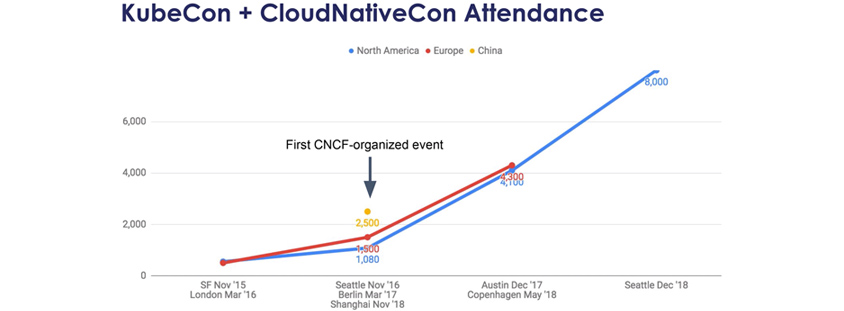 KubeCon + CloudNativeCon Attendance
KubeCon + CloudNativeCon Attendance
※ What is Kubernetes?
Kubernetes is an open-source system for automating deployment, scaling, and management of containerized applications. Simply put, it is a container orchestration system. The most commonly used container is Docker. For more information, please refer below.
- Welcome to Kubernetes: A Beginner’s Guide
- What is Kubernetes?
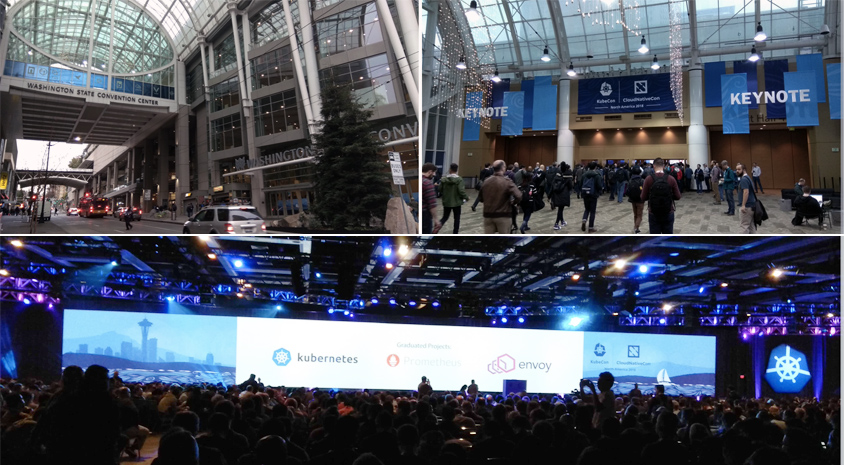 KubeCon + CloudNativeCon North America 2018 Conference
KubeCon + CloudNativeCon North America 2018 Conference
The conference was held over four days. The pre-event sessions began on December 10th and the official conference kicked off with the keynote on the 11th. With more than 300 different sessions and nearly 100 exhibition booths, this year was the biggest Kubecon to date.
 Conference Agenda
Conference Agenda
CNCF Projects in Keynote
Graduated Projects
CNCF projects are full stack open source components in a cloud-native environment and are divided into three different application maturity tiers: Sandbox, Incubating and Graduated. Sandbox are projects that have been adopted by innovators, Incubating are projects that have been adopted by early adopters while Graduated projects are those that have crossed the Chasm and have been adopted by the late majority.
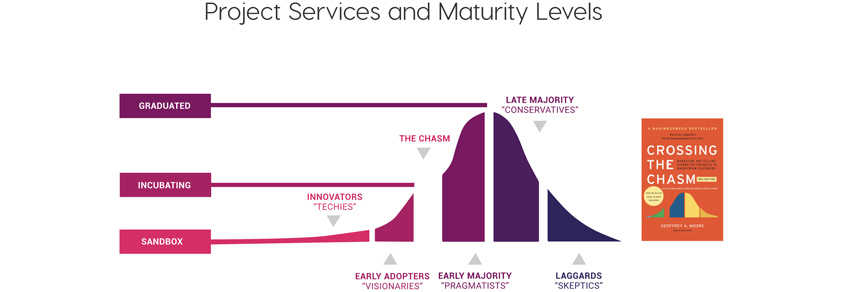
A total of three open source projects have achieved Graduated maturity level. Beginning with Kubernetes last March, Prometheus and Envoy also achieved Graduated maturity level in August and November respectively.
- Kubernetes (https://kubernets.io)
: On Github, Kubernetes is ranked 9th for commits and 2nd for authors and issues out of 1.5 million projects as of March 2018. Many companies including Uber, the New York Times and eBay are already using Kubernetes.
- Prometheus (https://prometheus.io/)
: Prometheus is an open source systems monitoring and alerting toolkit that specializes in collecting time series data for machine-centric monitoring as well as monitoring of highly dynamic service-oriented architectures. Since its inception in 2012, many companies have adopted Prometheus.
- Envoy (https://www.envoyproxy.io/)
: Envoy is an open source service proxy designed by Lyft to support cloud-native applications. In a microservice architecture, networking services are complex and can cause numerous issues. However, by running a proxy such as Envoy for each service, all service traffic can be controlled and any subsequent issues can be resolved at the network level.
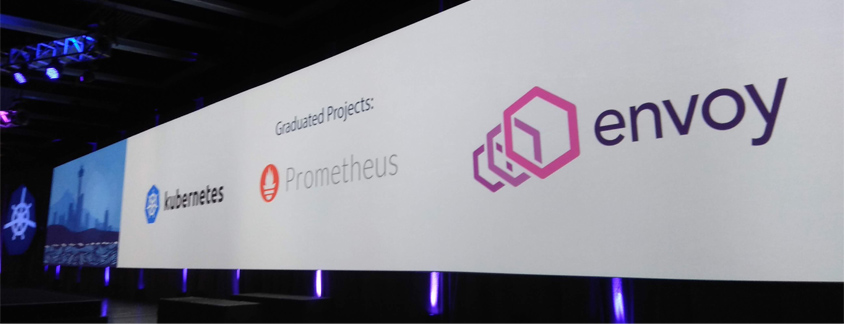 Graduated Projects
Graduated Projects
Incubating Projects
Many projects are currently in the Incubating maturity level including Fluentd, gRPC and Jaeger. Recently, Helm, the package manager for Kubernetes, and Harbor, a container image registry, were promoted to Incubating status.
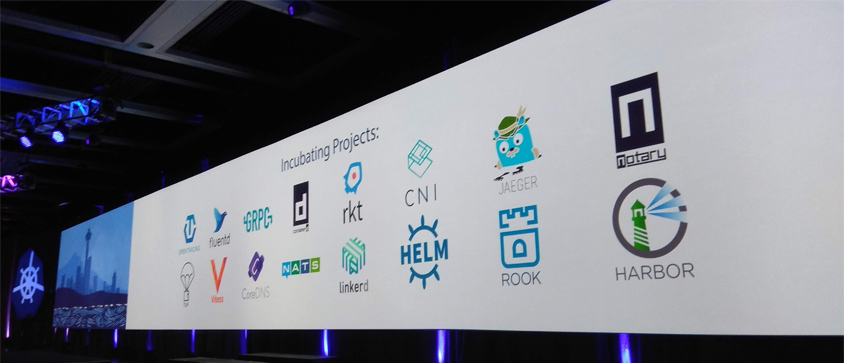 Incubating Projects
Incubating Projects
Attended Sessions
Since I am a developer, not a cloud engineer, most of the sessions I attended were cloud-native development demonstrations targeted towards developers. I also attended sessions about Software Continuous Integration and Delivery because they are subjects of personal interest. Many renowned entrepreneurs shared their first-hand experience during the sessions.
Migrating Jenkins to Kubernetes Broke Our Brains, SAP
During this session, SAP shared their experience of migrating their existing Jenkins based build system to a VM+Chef environment with Kubernetes. While explaining how they configured solid clusters using kubeadm and ran Jenkins using helm charts and shell scripts, SAP captivated everyone’s attention by explaining the different problems they experienced during each step with humor.
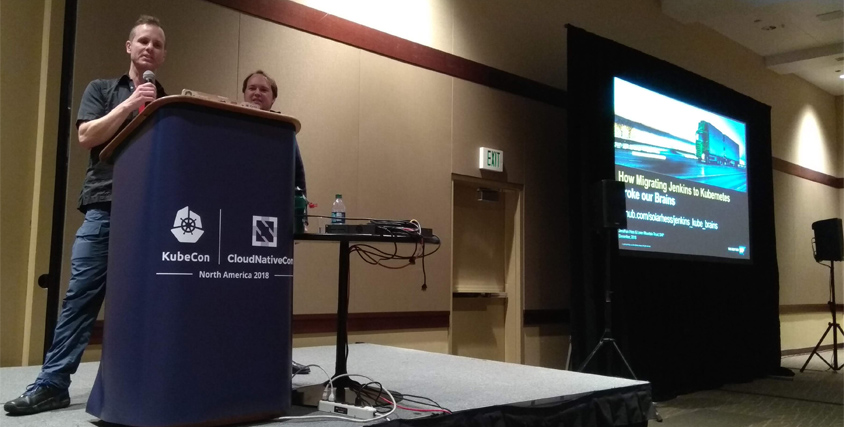 Migrating Jenkins to Kubernetes Broke Our Brains, SAP
Migrating Jenkins to Kubernetes Broke Our Brains, SAP
Monolith to Microservice: Pitchforks Not Included, GitLab
GitLab talked about their move from monolith systems to Kubernetes-based microservices. They explained how continuing existing product development and serving customers on legacy software while moving to microservices was akin to trying to repair a race car competing in a race without any pit stops.
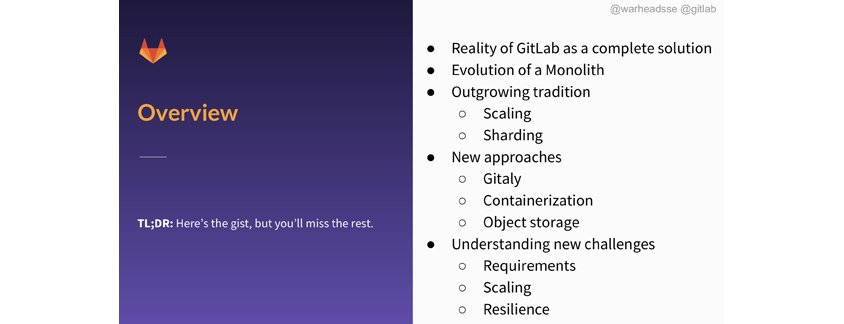 Monolith to Microservice: Pitchforks Not Included, GitLab
Monolith to Microservice: Pitchforks Not Included, GitLab
Intro: Helm
Matt Farina, a member of Samsung SDSRA Cloud Native Computing Team and a Helm project Maintainer, was the presenter for this session. With Helm 3 currently in development, Matt provided a brief overview and also talked about the past, present and future of the Kubernetes package manager.
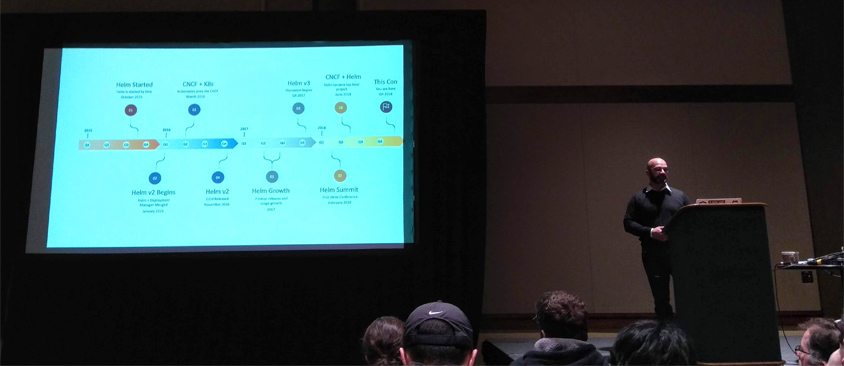 Intro: Helm
Intro: Helm
Hands-on-Labs
I also had the pleasure of attending two Hands-on-Labs.
Streamlining Your Kubernetes Application Development with Draft & Brigade, Microsoft
This Hands-on-Lab session taught developers how to deploy applications in a cloud environment using Draft and Brigade, regardless of familiarity with Kubernetes.
( https://github.com/deislabs/draft-brigade-workshop )
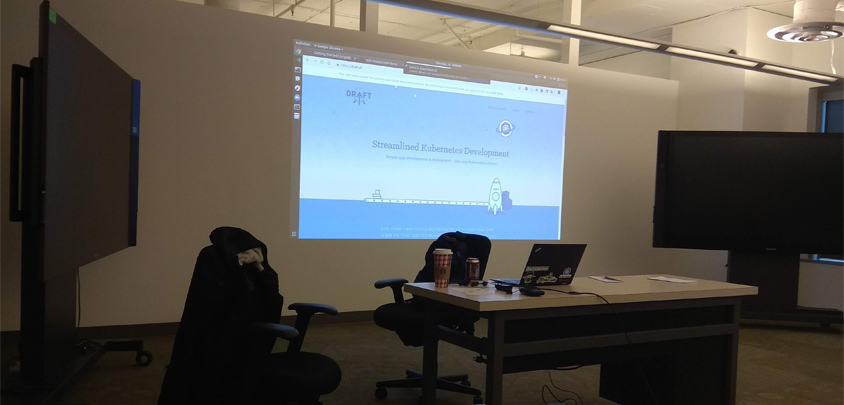 Streamlining Your Kubernetes Application Development with Draft & Brigade
Streamlining Your Kubernetes Application Development with Draft & Brigade
Build Your Next App with Kubernetes + Istio, IBM
During this Hands-on-Lab, IBM discussed the background and functions of the ever-popular Istio. The session also included a brief application deployment demonstration using Istio.
( https://istio101.gitbook.io/lab/workshop )
 Build Your Next App With Kubernetes + Istio
Build Your Next App With Kubernetes + Istio
Thoughts on Kubecon 2018
Many companies are already using Kubernetes to solve the challenges of developing and deploying applications in a very competitive global market. Moreover, companies like Google, AWS, IBM,and Oracle are urging companies to migrate workloads to their cloud. They also emphasize how easy it is to migrate applications from other clouds to their own cloud thanks to cloud native technologies.
Nowadays, cloud-native application development and service provisioning have become the default choice. This year’s Kubecon has shown that Kubernetes plays an integral role in this.
As a developer, I am now faced with the difficult task of trying to figure out how to switch my previous development methods to cloud-native. Migrating to a cloud-based build, distribution and operation environment is another dilemma. However, my new found knowledge of Kubernetes and Cloud Native technologies also presents me with the limitless possibilities of a blank slate.
In closing, I thank you for reading my Insight Report about my Kubecon+CloudNativeCon North America 2018 experience and wish you great success in all of your endeavors.
※ Watch all of the Kubecon+CloudNativeCon ’18 sessions here:
https://www.youtube.com/playlist?list=PLj6h78yzYM2PZf9eA7bhWnIh_mK1vyOfU
▶ The contents are protected by copyrights laws and the copyrights are owned by the creator.
▶ Re-use or reproduction as well as commercial use of the contents without prior consent is strictly prohibited.

Byeong Mu Lee is the cloud unit technology leader of his department. He has developed various finance, CRM and MIS systems and is currently working on the Cloud Native Computing Team for Samsung SDSRA as a part of the Global Exchange Program.
Related Articles
-
[Technology Toolkit]
No More Short of GPU! - Thinking Like A Cloud Part 2 - Open Source and Inner Source - How Open Enables Innovation
- Thinking like a Cloud
- Welcome to Kubernetes - A Beginners Guide
- Service Integration is the new System Integration
- The Beginning of Reduction in Data Operation Costs with ILM